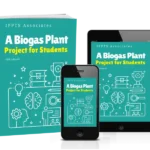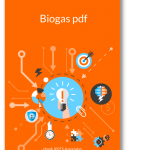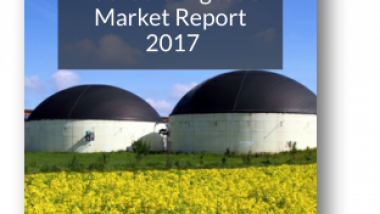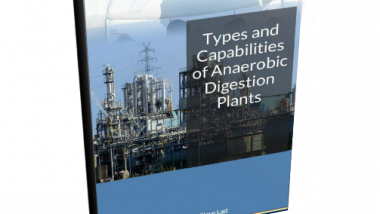 Dry Anaerobic Digestion Secrets is a pdf file that you can download for no charge, now!
Dry Anaerobic Digestion Secrets is a pdf file that you can download for no charge, now!
Find Out About the Secret Success of Dry Anaerobic Digestion in this Book
While the anaerobic digestion industry has been creating wet anaerobic digestion plants and the public has become familiar with the characteristic “domed circular digesters” of “wet” anaerobic digestion, there is another type of AD which has remained largely a “secret”, from most people.
Dry anaerobic digestion process plants look nothing like these well-known iconic reactors. It would be hard to spot one anywhere unless told about it in advance. These biogas producing plants are nevertheless, in use around the world, and their numbers are growing.
The process takes place in tunnels (as shown on the cover of this book), or in huge slowly rotating tubular (horizontally-mounted) drums. These are used instead of the wet AD system’s large tanks. Plus, the pipes and pumps, are used to move the organic feed material through the system.
At dry anaerobic digestion facilities, you will see front end loading shovels, elevators, and similar wheeled plants in use to move the waste around. Pumps and tanks are used but are less complex, and smaller sized than for the equivalent “wet” process.
The advantage of this so-called, “secret” process, is that it produces biogas from solid organic wastes in the solid form. Water is still essential to the process, but there is less of it used. It is usually added as part fresh water, and part recycled digestate. The water/digestate is added as soon as the fresh feed-stock waste material has been placed within the anaerobic tunnel “reactor vessel”, and sealed off from the entry of air.
The recycled digestate is naturally loaded with “seed” organisms which will do the fermenting of this fresh feed material. It is added with the water/digestate mixture as soon as each tunnel section has been loaded with organic material and the doors at each end, have been closed and sealed. The digestate/ water mixture drives the process reaction and the result is biogas and digestate, as in the wet AD processes.
These dry anaerobic digestion processes have been developed in the background, while the wet processes have been stealing the limelight. Dry digesters, so far have a lower conversion rate for the cubic metres of biogas created, per unit weight of organic feed material, than wet systems. At first sight, that’s a disadvantage.
However, these dry systems generally consume less water and produce much less digestate. That can be an advantage. It can reduce digestate disposal costs and be a good thing. As many of these systems would have difficulties in selling, or even giving away their liquid digestate, this lower volume can save operators money, and lead to a more viably profitable plant.
There is another “dry AD”, selling point, as well, and that is part of the “secret”. Read the eBook to find out more! But, let us just say (for now), that it is to do with the diminishing availability of low cost (liquid phase) organic waste materials. This is occurring as competing AD Plant operators, and the rising numbers of AD plants in use, begin to deplete the available feedstock sources.
Our book is a free pdf download, so you have nothing to lose when you click on the link below and get your copy!
A Biogas Plant Project for Students pdf
Unleash the Power of Renewable Energy in Your Classroom – Download Our FREE eBook Today! Have you been looking for a way to make science exciting, tangible, and relevant for your students? Are you passionate about equipping the next generation with the tools they need to face global environmental challenges head-on? If your answer is […]
Biogas in India 2019
Biogas in India – Agricultural AD, Community AD and in the Home Our Biogas in India ebook is a pdf version of the article on our website on the page of the same name. This free pdf is a copy of the content of the Biogas India article page here. It should be useful for […]
Biogas Analysis and Gas Quality Monitoring of Anaerobic Digestion Processes
Biogas analysis, and maximizing the efficiency of anaerobic digestion plants is gaining more attention as the anaerobic digestion industry matures. If you are seeking to find out more about this topic, download our free ebook below: Table Of Contents Introduction GEOTECH Gas Analysers for Landfills and the Biogas Sector 4 LumaSense Technologies, Inc. 5 Cameron […]
Biogas pdf – Download for Free – No Sign-Up Needed
Download our Biogas pdf below. It’s NEW and it’s free! 11 pages of fresh new information on biogas for all those interested including students. Newbie friendly! No prior knowledge of the biogas process is needed. Table Of Contents Introduction Biogas Technology Advance – Biomethane Biogas Reducing Air-Pollution Landfill Biogas Biogas is Renewable Biogas is Created […]







